Beyond the Prison Gate – Recognition through Photography and Action Research in Myanmar
Posted:
Time to read:
Post by Liv S. Gaborit, PhD candidate, Roskilde University and DIGNITY – Danish Institute Against Torture.
‘Beyond the Prison Gate’ is an action research project carried out by Liv S. Gaborit and four Burmese photographers and former political prisoners: Phyoe Dhana Chit Lynn Htike, Sai Minn Thein, Pho Nyi Htwe and Letyar Tun as part of the larger research project Legacies of Detention in Myanmar. The project shows the everyday life of former political prisoners in Myanmar after they have been released. It shows how their continued struggles take many forms and addresses the call for recognition often set forth by former political prisoners. Today, they live in a post-authoritarian society, where the military regime they fought against has been replaced by ‘disciplined democracy’ and a civilian government, but where the military still holds strong influence and remnants of the authoritarian past endure (for more on the background click here to read a previous post).
Photographer Phyoe Dhana Chit Lynn Thike acknowledges the young generation of former political prisoners as they continue to work for democracy, freedom of speech and the right to education, the struggles which they were previously imprisoned for. His photos depict activists who were arrested and were in prison with him after the 2015 demonstration against a new education law. While the people in his photos are Barmar, the ethnic majority in Myanmar, through the selection of cases he represents, he is inclusive of other ethnic groups too. In the first photos Ko Min Thaway Thit and Ma Po Po create a political happening in their wedding photos, in the support of a group of internally displaced people in Kachin, who were caught in between the clash between the Tatmadaw (Burmese military) and Kachin Independence Army (ethnic armed group). In the second series, he depicts Maung Saung Kha, a renowned activist for freedom of speech, who has spoken for the rights of Muslims, though he himself has grown up within the Buddhist majority Barmar. Lastly, Phyoe Dhana reaches beyond his own generation through a series about U Nay Win, the father of Ma Phyoe Phyoe Aung, also a political prisoner. This last series recognises the contribution of different generations of political prisoners. There are major differences in the struggles of activists against the military regime, and the struggles of activists in the ‘disciplined democracy’ of today.
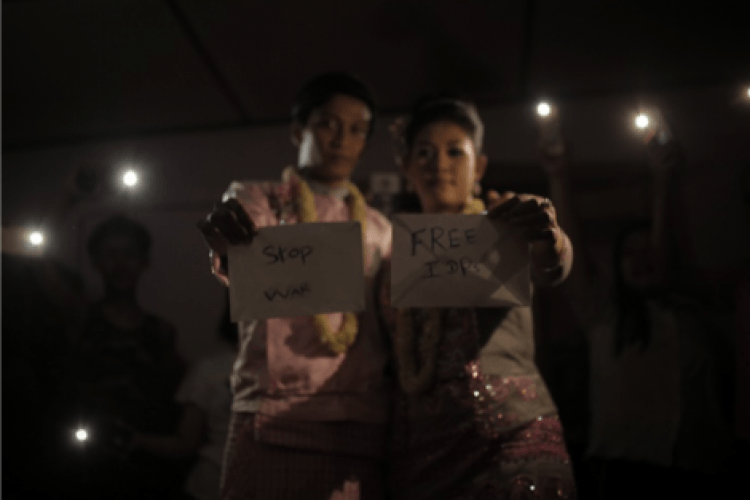
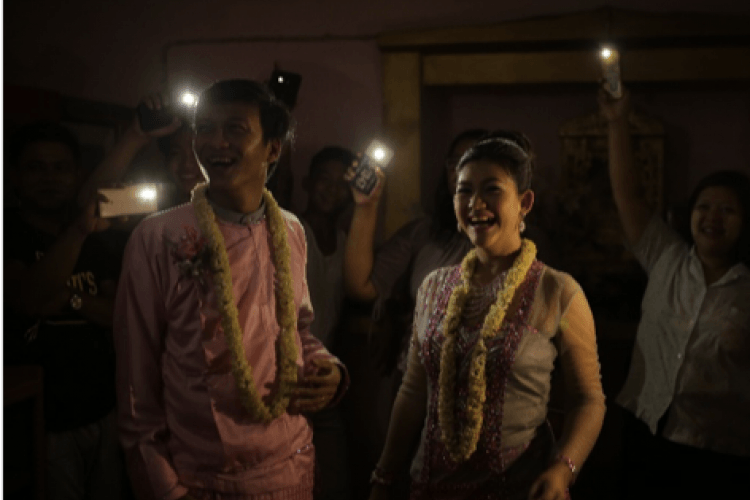
Photo caption: Ko Min Thway Thit was imprisoned in 2015 for his role in the protests against the new education bill and released in 2016. The pictures show how activism makes it into the most happy and intimate moments as Ko Min Thaway Thit and Ma Po Po decided to campaign for the IDP’s in Kachin even on their wedding day. (Photo: Phyoe Dhana Chit Lynn Thike)

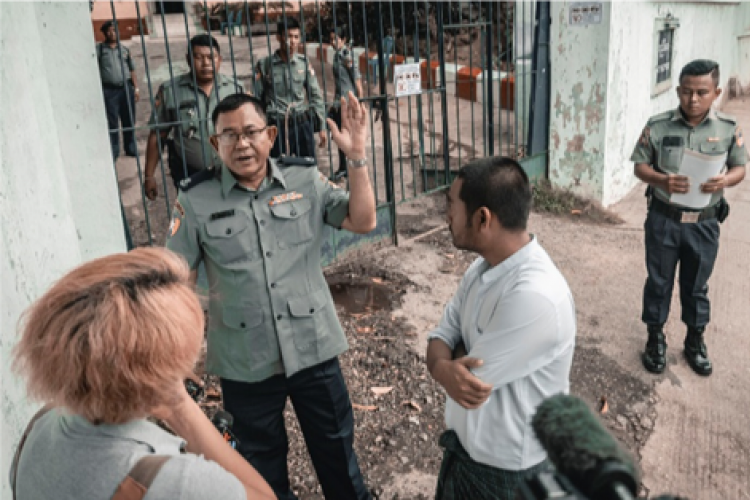
Photo caption: Maung Saung Kha was first arrested on November 5, 2015 and charged with defamation under telecommunication law for a poem he posted on Facebook. He was released on May 24, 2016 when he received his sentence for 6 months, the same amount of time he had already spent in detention. He was detained again, on May 19, 2018, for his involvement in a demonstration for peace, this time he was released on bail. He undauntedly continues to work for freedom of expression. (Photo: Phyoe Dhana Chit Lynn Thike)

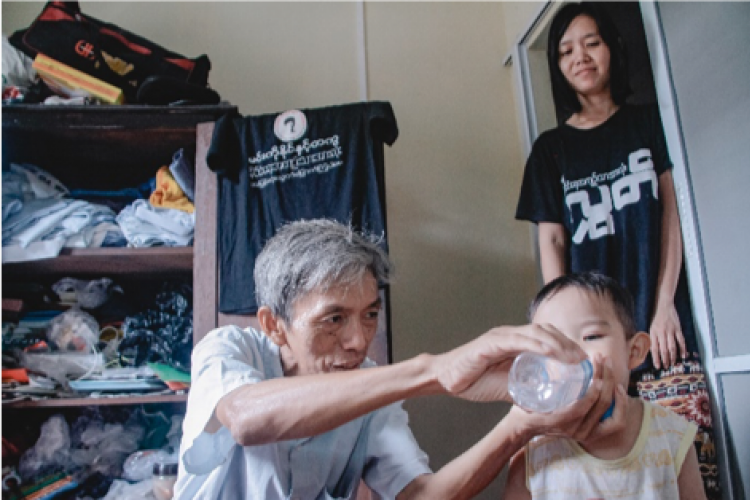
Photo caption: U Nay Win was first arrested in 1989 and served 15 years and 4 months for being part of the communist party. He was released in 2005 but arrested again in 2008 while burying victims of the Cyclone Nargis and charged with harbouring a fugitive. The fugitive was his daughter Phyoe Phyoe Aung, who was fleeing charges for her part in re-establishing the All Burma Federation of Students Unions. In the pictures you see him together with Phyoe Phyoe Aung and his grandson and working as an acupuncturist offering free treatment to people in need. (Photo Phyoe Dhana Chit Lynn Thike)
Photographer Sai Minn Thein engages in two topics with his photos, relating to recognition of the deprivations political prisoners face. In the first series he shows U Ye Lwin receiving treatment at the Healthcare Centre for Political Prisoners (HCPP). The HCPP offers free treatment to political prisoners for the many health problems they face as a consequence of torture and many years in prisons with little access to nutritious food and healthcare. The second series of images documents the deprivation of contact with family members political prisoners faced when they were sent to prisons in remote areas. He skilfully does this through a depiction of how the Sanchaung family is picked apart as they are imprisoned one by one and sent to prisons in different parts of the country.
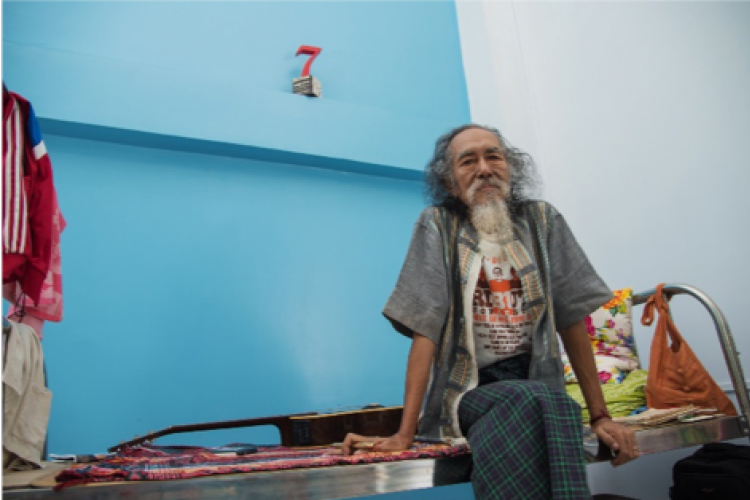
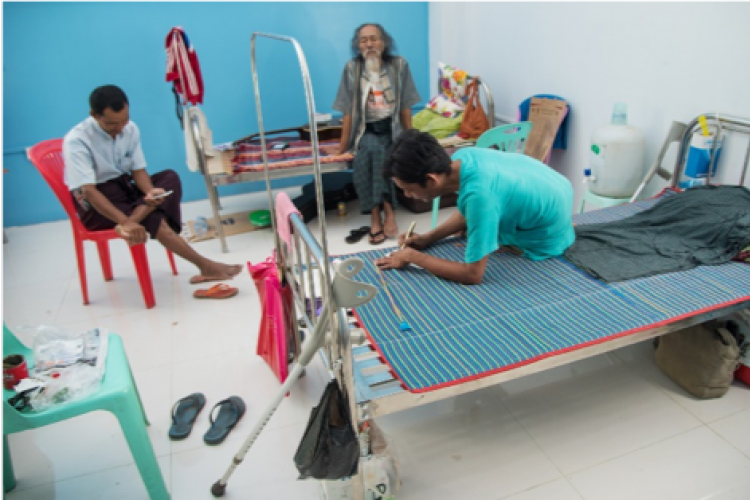
Photo caption: U Ye Lwin was a famous singer, guitarist and composer in Panyelann (Path of Flowers). He was arrested in September, 2007 and released in December 2007. He was known for playing at teashops and in the streets to collect donations for IDPs and support the National League for Democracy. These pictures were taken while he was a patient at HCPP. U Ye Lwin died on the 10th of July 2018, only two days after these pictures were first shown to the public. (Photo: Sai Minn Thein)


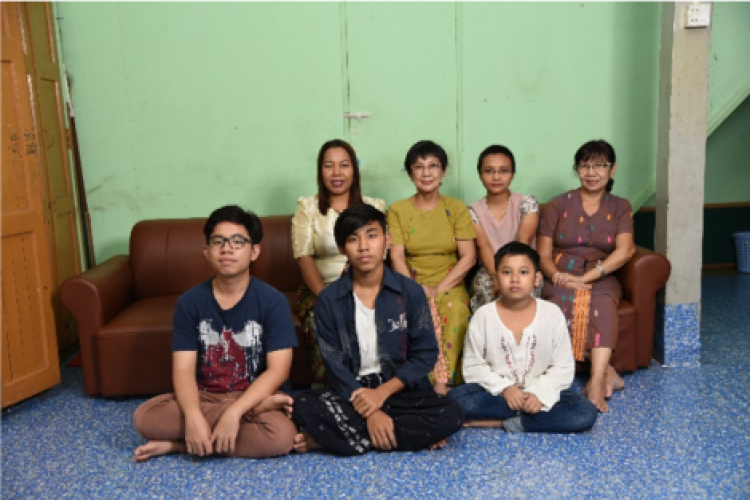
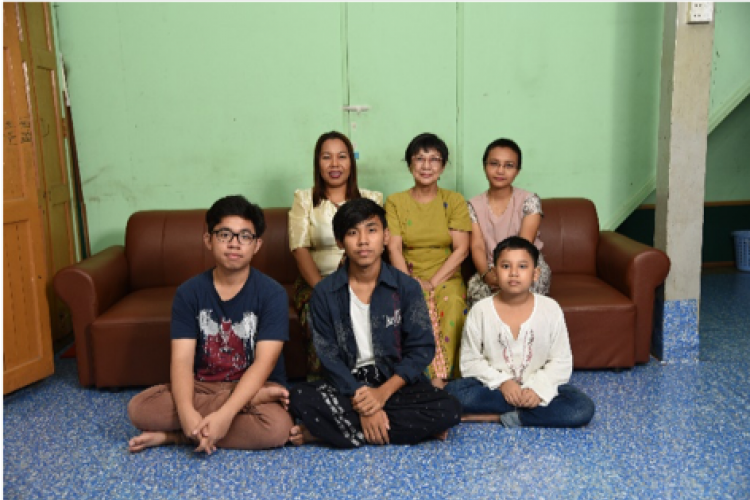
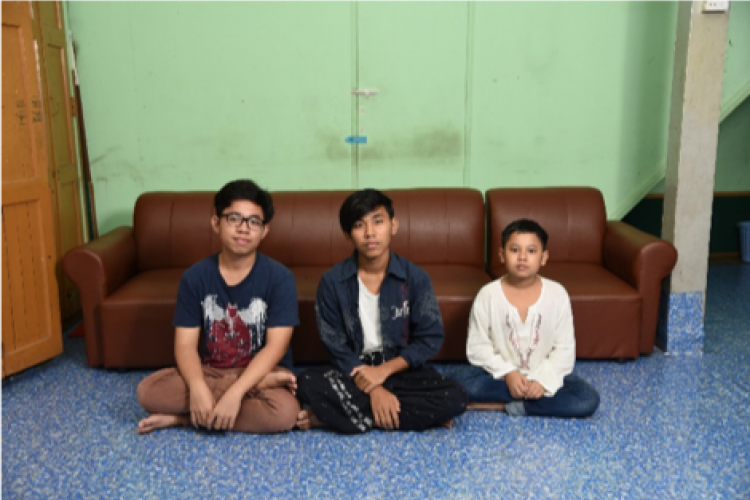
Photo caption: From left to right: U Htun Nay Aung aka. Jo Joe, arrested August 24, 2007, released November, 2007. Detained in Kyeik Ka San Interrogative Center and Kyauk Tan Police regiment; U Chit Ko Lin, arrested October 8, 2007, sentenced to 11 years and released October 12, 2011 from Pakokku Prison; Daw Thet Thet Aung, arrested October 18, 2007, sentenced to 65 years on 6 different cases, released January 12, 2012 from Myin Chan Prison; Daw Sann Sann Tin, arrested October 18, 2007, sentenced to 9 years and released October 12, 2011; Ma Nwe Hnin Yi aka. No Noe, arrested October 18, 2007, sentenced to 11 years and released October 12, 2011 from Mau Bin Prison; Daw Su Su Kyi, arrested 1992, 1993 and on October 9, 2007, released November 2007. Detained in Aung Thapyae Interrogation Center. (Photo: Sai Minn Thein)
Photographer Pho Nyi Htwe takes photos of how former political prisoners continue their struggle in various ways. His photos show Ko Kyi Soe and Ko Pho Kyaw struggling for their daily livelihood by selling lottery tickets or weighing people on the streets. The photos recognise their significant contribution to the struggle for democracy, while showing that today they struggle for everyday survival as their previous lives disappeared while they were imprisoned. In his images we also see Ma Thanda, who continues to fight for democracy within the system as a member of parliament, in spite of having lost years of her life imprisoned by the military regime, which later tortured and killed her husband, who was working as a journalist in the border areas where ethnic armed struggles take place.
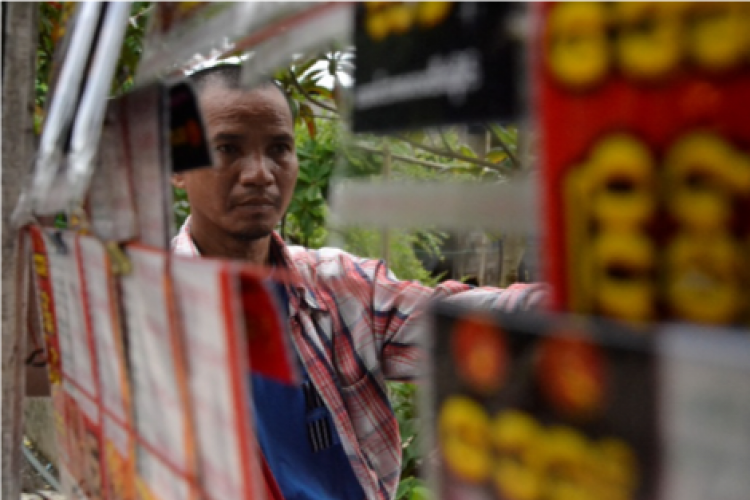

Photo caption: Ko Kyi Soe, was arrested on May 25, 1991 and sentenced to 6 years. He was released on December 28, 1995 from Insein Central Jail. In the pictures, he works for his daily living selling lottery tickets. (Photo: Pho Nyi Htwe)
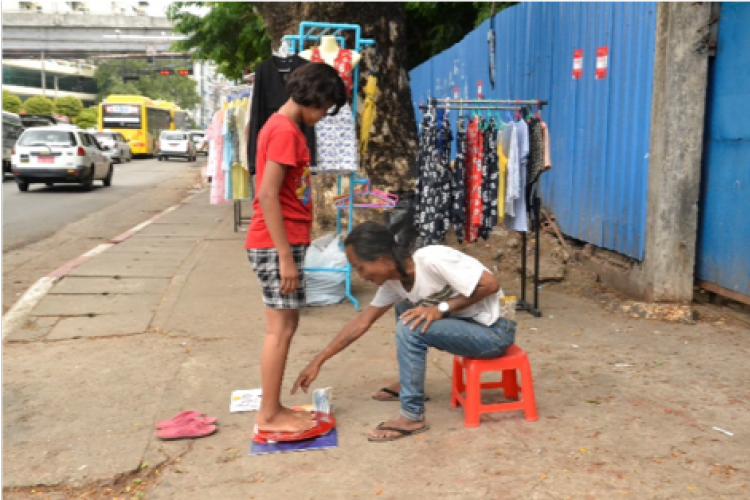

Photo caption: Ko Kyaw Min Swe aka. Pho Kyaw joined the All Burma Students Democratic Front in the northern camp by the border to Thailand after the democratic uprising in 1988. He fled from the camp after the incident in 1991-1992 where students turned on each other and some students were accused to be informers of the state. In 1998, he was arrested because of his participation in the anniversary of the 1988 uprising. He was sentenced to 7 years under section 5J of the Emergency Act. He was released from Oh Bo Prison in 2004. In the pictures, he is earning his daily living by weighing people. (Photo: Pho Nyi Htwe)
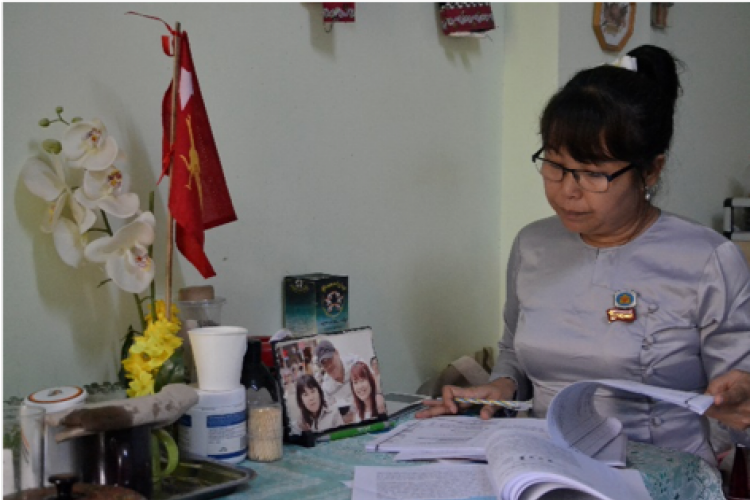
Photo caption: Ma Thanda was arrested on April 23, 2007 at the Thai/Myanmar border. She was sentenced to 28 years of imprisonment, of which she served 6 before being released on amnesty. In the photo she works in her office next to a picture of her late husband U Par Gyi who was executed in 2014 while covering a story on the clash between ethnic groups and the military. Today she is a member of parliament (Hllutaw) for the National League for Democracy. (Photo: Pho Nyi Htwe)
Photographer Letyar Tun recognises the families of political prisoners who died while still inside prison. He does so through a series of photos previously shown in the project Framing the Transition. The photos show family members of fallen political prisoners. Letyar Tun documents how memorabilia of dead political prisoners remain the same, as if frozen in time, while their families live on.

Photo caption (top): U Maung Ko was arrested in December 1996, accused of contacting the Communist Party of Burma. He was sentenced to 14 years imprisonment. During the imprisonment, his cardio disease was aggravated by torture and not being allowed access to medical care. He was transferred from Tharyarwady to Insein and died on 15 November 2002. In the picture his children hold a photo of him. (Photo: Letyar Tun)

Photo caption (middle): Ko Zaw Myo Htet was arrested on July 16, 2003 and died on October 19 2004 at the age of 28. He was accused of destabilizing the state and assassinating the Chief of State. He received a death sentence, which was appealed to the higher court where it was commuted and reduced to 3 years. He died of jaundice in the guarded ward of Yangon General Hospital as a prisoner patient. In the picture his father holds a certificate of acknowledgement received from the Association of Assistance for Political Prisoners. Photo: Letyar Tun
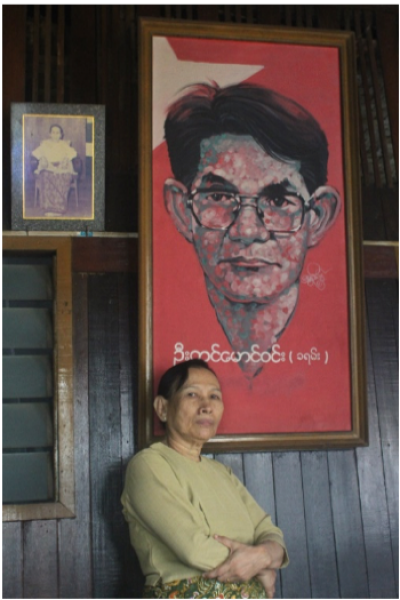
Photo caption (bottom): U Tin Maung Win was born in 1939 in Khayan township. He became a political activist as a university student. In the 1990 election he was elected member of parliament for the National League for Democracy and arrested by military intelligence. Only a few months later he died in prison on January 18, 1991. In the picture, Daw Kyu Kyu stands in front of a portrait of her late husband. Photo: Letyar Tun
Engaging in action research with former political prisoners through photography furthered the research in two significant ways. Firstly, by working together with former political prisoners, who had experienced imprisonment and post-prison life on their own bodies, the project was able to add nuances to understandings of political prisoners, which were previously unseen in documentation of their experiences and which improved the general understandings of experiences of imprisonment in the research. Secondly, by using visual methods in co-creation with local actors, the project was able to reach a greater audience in Myanmar and beyond. By now, the photos have been exhibited in four places, two in Myanmar and two in Denmark. In all places, different audiences have interacted with the photos and learned about experiences of former political prisoners after release. The audiences range from other former political prisoners in Myanmar, who are intimately familiar with post-prison experiences, to a Danish audience, in which some did not know what and where Myanmar was, and who had no previous knowledge about the political situation in the country or the human lives that were affected. Through the visual communication, these very different audiences were able to engage with the human experiences of life after imprisonment.
Beyond the Prison Gate is part of the research project Legacies of Detention in Myanmar, which is funded by the Danish Foreign Ministry.
Any comments about this post? Get in touch with us! Send us an email, or post a comment here or on Facebook. You can also tweet us.
__________
How to cite this blog post (Harvard style)
Gaborit, L. (2019). Beyond the Prison Gate – Recognition through Photography and Action Research in Myanmar. Available at: https://www.law.ox.ac.uk/research-subject-groups/centre-criminology/centreborder-criminologies/blog/2019/12/beyond-prison (Accessed [date])
Share:








